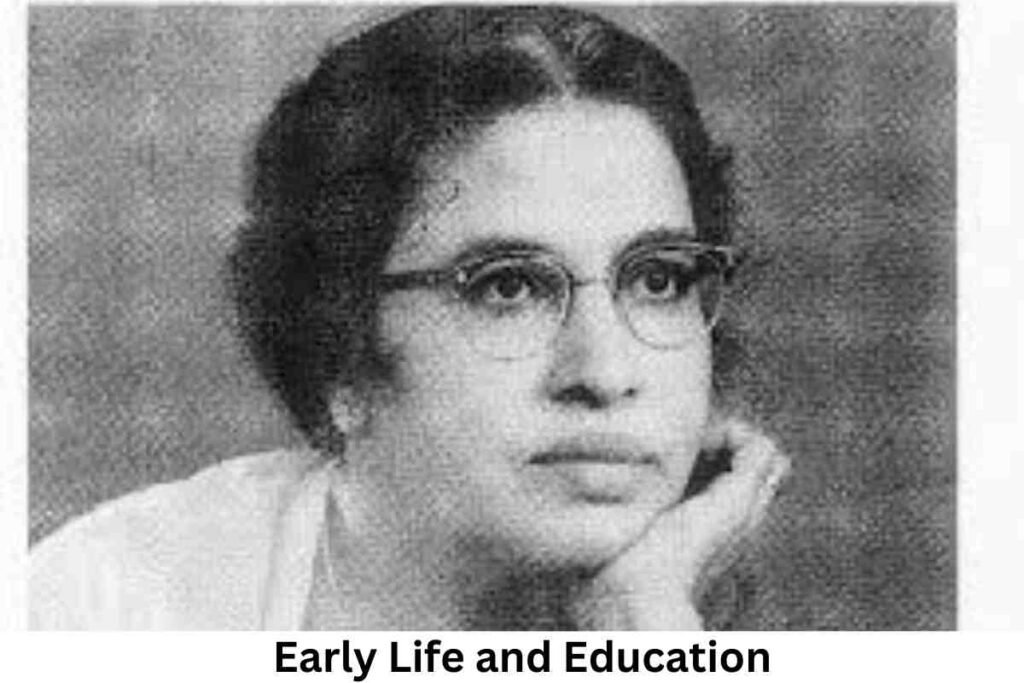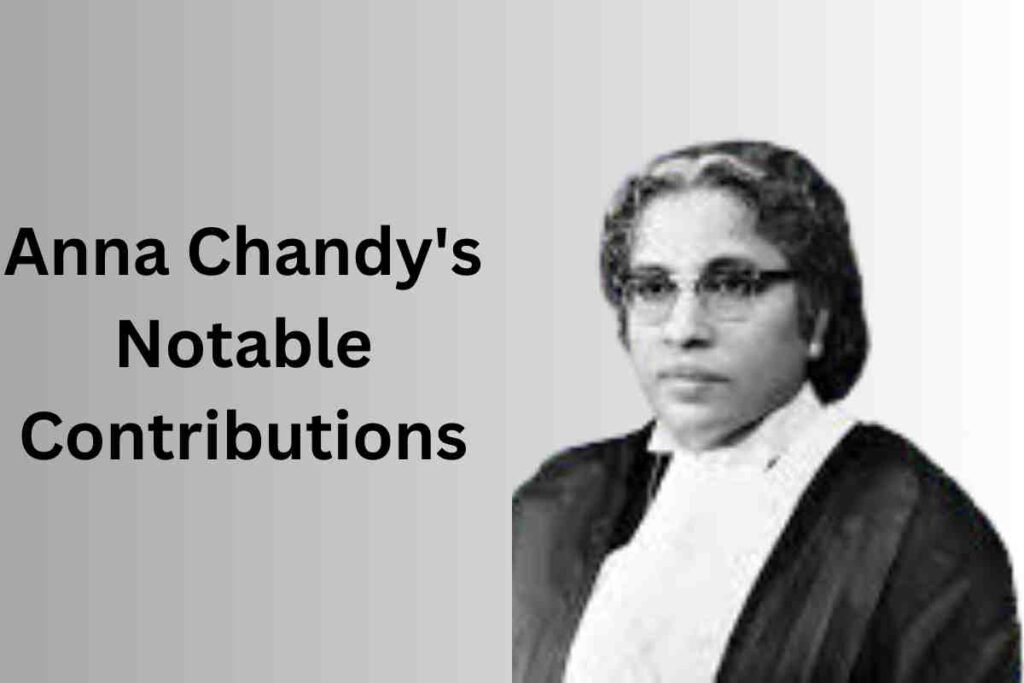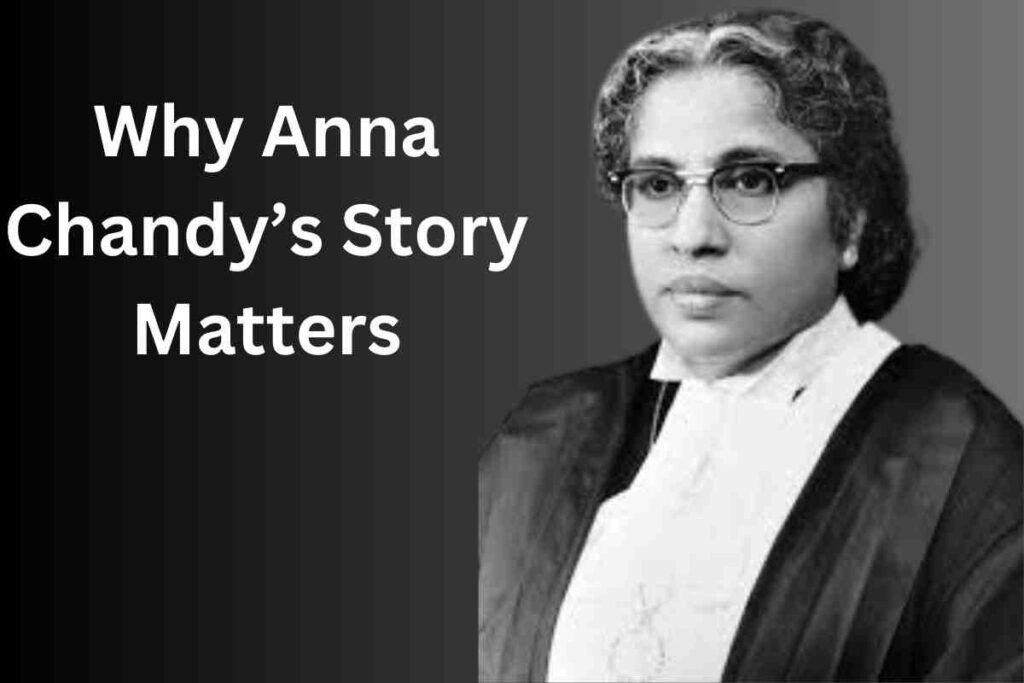Anna Chandy (1905–1996) holds an enduring legacy as India’s first female judge and one of the world’s earliest women to serve as a High Court judge.
Her achievements extend beyond the judiciary into advocacy, politics, and women’s rights, making her a trailblazer in many spheres.
In this comprehensive article, we delve into her life, career, and contributions, ensuring it is rich in detail, SEO-optimized, and engaging.
Early Life and Education of Anna Chandy

Born in 1905 in Kerala, Anna Chandy was a visionary even in her formative years. She hailed from a Syrian Christian family, a progressive community known for prioritizing education and empowerment for women.
Recognizing the significance of knowledge, Anna pursued higher education at a time when opportunities for women were scarce.
She earned a Bachelor’s degree in Law (LLB) and soon became one of the first women in Kerala to practice as an advocate in the district court of Travancore.
Her education and early career marked the beginning of a journey that would redefine the role of women in India’s legal system.
| Year | Milestone |
|---|---|
| 1926 | Earned a postgraduate degree |
| 1927 | Enrolled in Government Law College, Thiruvananthapuram |
| 1929 | Called to the Bar and specialized in criminal law |
The Legal Career of Anna Chandy
Anna-Chandy began her legal practice in the 1920s, focusing on cases that often involved marginalized communities.
Her dedication to justice quickly earned her a reputation as a fair and competent lawyer. In 1937, she shattered gender norms by becoming the first woman in India to be appointed as a munsiff (a judicial magistrate).
First Female Judge in India
Anna-Chandy broke gender barriers in 1937 when she was appointed a Munsif Judge in Travancore. This made her not only the first female judge in India but also one of the first in the British Empire.
High Court Achievements
Her career reached new heights when she became the first woman judge in an Indian High Court in 1959, serving at the Kerala High Court.
She held this position until her retirement in 1967, marking a decade of significant contributions to Indian jurisprudence.
| Year | Judicial Role |
|---|---|
| 1937 | First Grade Munsif |
| 1943 | Additional District Judge |
| 1948 | District Judge |
| 1959 | High Court Judge |
Anna Chandy’s ascent in the judiciary reflects her perseverance and exceptional legal acumen.
Political Contributions
Anna-Chandy’s contributions were not limited to the judiciary. She also had an impactful political career: She later served in the Travancore Vidhan Parishad, continuing her influence on governance.
1932–1934: Elected to the Shree Mulam Popular Assembly (Praja Sabha), the legislative advisory body of Travancore, marking her as a vocal advocate for democratic participation.
Anna Chandy’s Notable Contributions

Advocacy for Women’s Rights
Anna Chandy’s judicial rulings often reflected her progressive ideology. She championed the cause of gender equality, focusing on issues like inheritance rights, workplace equality, and safeguarding women against exploitation.
Breaking the Gender Barrier
Her rise to prominence highlighted the disparities in a male-dominated field and proved that women could excel in any profession. She consistently advocated for the inclusion of women in leadership roles across various sectors.
Timeline of Achievements
| Year | Milestone |
|---|---|
| 1905 | Born in Kerala |
| 1920s | Started her legal career as an advocate |
| 1937 | Became the first female munsiff in India |
| 1959 | Appointed as a judge in Kerala High Court |
| 1967 | Retired from the judiciary |
| 1996 | She Died |
The Legacy of Anna Chandy
Anna Chandy’s life was more than a personal success; it marked a societal transformation. Her groundbreaking achievements opened doors for countless women, inspiring future trailblazers like Justice Fathima Beevi, India’s first woman Supreme Court judge.
She demonstrated that determination and vision could dismantle even the most entrenched barriers.
Memorial and Recognition
Even decades after her passing in 1996, Anna Chandy continues to be celebrated as a pioneer in the legal and feminist spheres.
Her trailblazing journey is honored through numerous initiatives, including lectures, scholarships, and memorial events hosted by academic institutions and organizations.
Her enduring legacy serves as a beacon of progress for women aspiring to leadership in all fields.
Why Anna Chandy’s Story Matters

Anna Chandy’s legacy resonates as a role model for aspiring lawyers and feminists alike. Her life highlights the importance of courage, education, and advocacy in overcoming societal barriers.
By highlighting Anna Chandy’s achievements, career milestones, and advocacy for women, this article aims to provide a complete and authoritative overview that ranks highly for the focus keyword Anna Chandy.
Related Keywords:
- First female judge in India
- Kerala High Court judge
- Women’s rights advocate in India
- Trailblazer in Indian judiciary
- Shreemati women’s magazine
With this comprehensive coverage, we honor Anna Chandy, a luminary who changed the course of history for women in India and beyond.
Conclusion
Anna-Chandy’s story is a testament to perseverance, courage, and breaking societal barriers. Her contributions extend beyond the courtroom, leaving an indelible mark on India’s judicial and cultural landscape.
By acknowledging and learning from her life, we can continue to advocate for gender equality and representation in all fields.
Anna-Chandy, the first woman judge in India, stands as an enduring symbol of progress and empowerment, making her an inspiration not just for women in law but for everyone striving for equality and justice.
FAQS
Who was Anna Chandy?
Anna-Chandy was India’s first female judge and the first woman to serve on a High Court, known for her pioneering contributions to law and women’s rights.
When did Anna Chandy become a judge?
Anna-Chandy became a Munsif judge in 1937, the first woman in India to achieve this distinction.
What was Anna Chandy’s role in the Kerala High Court?
Anna-Chandy was appointed to the Kerala High Court in 1959, becoming the first female High Court judge in India, a position she held until 1967.
Did Anna Chandy advocate for women’s rights?
Yes, Anna-Chandy actively championed women’s rights through her journal Shreemati, promoting gender equality and addressing social issues.
What political roles did Anna Chandy hold?
Anna-Chandy served in the Shree Mulam Popular Assembly (1932–1934) and later in the Travancore Vidhan Parishad, contributing to governance and public policy.
What is Anna Chandy’s autobiography?
Anna-Chandy’s autobiography, Atmakatha, was first serialized in 1971 and published in 1973, offering insights into her life and career.
How did Anna Chandy inspire women in India?
Anna-Chandy broke barriers in law and politics, proving that women could excel in leadership roles and inspiring generations to pursue careers in these fields.
What is Anna Chandy’s lasting legacy?
Anna-Chandy’s legacy lies in her pioneering achievements as a judge, her advocacy for women’s rights, and her role as a trailblazer for gender equality in India.